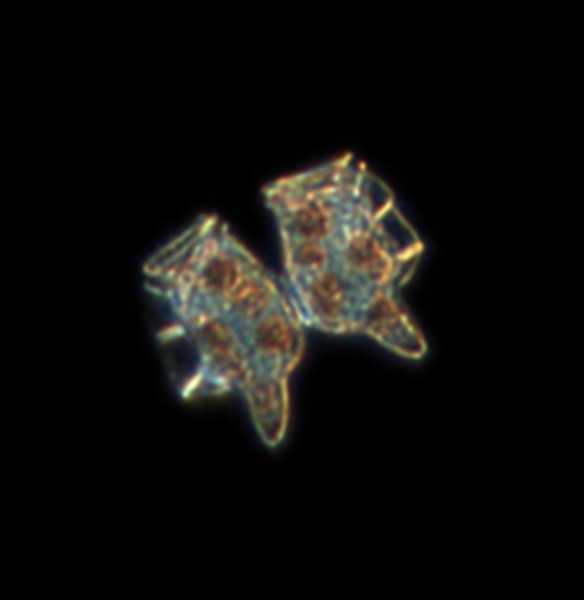Training image data for: Environmental and ecological drivers of harmful algal blooms in the Southern California Bight
Training image data for: Environmental and ecological drivers of harmful algal blooms in the Southern California Bight
About this collection
- Extent
-
1 digital object.
- Cite This Work
-
Kenitz, Kasia M.; Anderson, Clarissa R.; Carter, Melissa L.; Eggleston, Emily; Seech, Kristi; Shipe, Rebecca; Smith, Jayme; Orenstein, Eric C.; Franks, Peter J.S.; Jaffe, Jules S.; Barton, Andrew D. (2022). Training image data for: Environmental and ecological drivers of harmful algal blooms in the Southern California Bight. UC San Diego Library Digital Collections. https://doi.org/10.6075/J00865GT
- Description
-
The datasets include example images of marine protists and copepods that were used for training of machine classifiers in Kenitz et al. (in review). The images were collected by the Scripps Plankton Camera (SPC; http://spc.ucsd.edu/), located at the end of the Scripps Pier, La Jolla, CA, at the tide-dependent depth of approximately 3-4 m. The Scripps Plankton Camera system includes two free-space, darkfield microscopes: (i) micro-SPC equipped with a 5x objective for imaging of marine protists, and (ii) mini-SPC equipped with a 0.5x objective for imaging larger zooplankton.
The images in this database were used for training of two distinct classifiers:
1) Multi-class classifier for classification of marine protists:
Images for training of the multiclass classifier include examples of marine protists and other particles detected by the camera with the major axis in the range of 30-1000 microns. These images were collected by the micro-SPC.
2) Binary classifier for identification of marine copepods:
Images for training of the binary classifier include example images of marine copepods and non-copepods with the major axis in the range of 1-5 mm. These images were collected by the mini-SPC. Example images for the non-copepod class include everything not specifically identified as a copepod, such as cladocerans, euphausiids, appendicularians, large diatom chains and other unidentifiable particles. - Date Collected
- 2015 to 2019
- Date Issued
- 2022
- Author
- Advisors
- Contributors
- Technical Details
-
The Scripps Plankton Camera (SPC) system consists of two digital in-situ darkfield imaging microscopes: (i) micro-SPC equipped with 5x objective, and (ii) mini-SPC equipped with 0.5x objective. The system is designed to image organisms and particles that range between tens of micrometers to several centimeters in size. The SPC is a free-space system which means it uses no nets, filters, or pumps, and captures images without disturbing the ambient flow or interfering with imaged particles. The system has been deployed at Scripps Pier, La Jolla, CA, since March 2015 at the tide-dependent depth of approximately 3-4 m.
For more technical details of the SPC refer to:
Orenstein, E. C., D. Ratelle, C. Briseño-Avena, M. L. Carter, P. J. S. Franks, J. S. Jaffe, and P. L. D. Roberts. 2020. The Scripps Plankton Camera system: a framework and platform for in situ microscopy. Limnol. Oceanogr. Methods 1–15. doi:10.1002/lom3.10394 - Funding
-
Simons Foundation
National Science Foundation (NSF) BIGDATA Initiative (award #NSF IIS 15-46351) - Topics
Format
View formats within this collection
- Language
- No linguistic content; Not applicable
- Identifier
-
Identifier: Andrew D. Barton: https://orcid.org/0000-0002-6480-4433
Identifier: Clarissa R. Anderson: https://orcid.org/0000-0001-5970-0253
Identifier: Kasia M. Kenitz: https://orcid.org/0000-0002-0534-4166
- Related Resources
- Kenitz, K.M., Anderson, C.R., Carter, M.L., Eggleston, E., Seech, K., Shipe, R., Smith, J., Orenstein, E.C., Franks, P.J.S., Jaffe, J.S. and Barton, A.D. (2023), Environmental and ecological drivers of harmful algal blooms revealed by automated underwater microscopy. Limnol Oceanogr, 68: 598-615. https://doi.org/10.1002/lno.12297
- Kenitz, K.M., Orenstein, E.C., Anderson, C.R., Barth, A.J., Briseño-Avena, C., Caron, D.A., Carter, M.L., Eggleston, E., Franks, P.J.S., Fumo, J.T., Jaffe, J.S., McBeain, K.A., Odell, A., Seech, K., Shipe, R., Smith, J., Taniguchi, D.A.A., Venrick, E.L. and Barton, A.D. (2023), Convening Expert Taxonomists to Build Image Libraries for Training Automated Classifiers. Limnology and Oceanography Bulletin. https://doi.org/10.1002/lob.10584
- Orenstein, E. C., D. Ratelle, C. Briseño-Avena, M. L. Carter, P. J. S. Franks, J. S. Jaffe, and P. L. D. Roberts. 2020. The Scripps Plankton Camera system: a framework and platform for in situ microscopy. Limnol. Oceanogr. Methods 1–15. https://doi.org/10.1002/lom3.10394
Primary associated publication
Reference
 Library Digital Collections
Library Digital Collections
